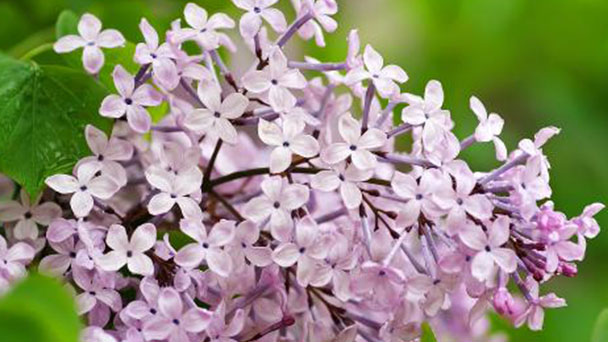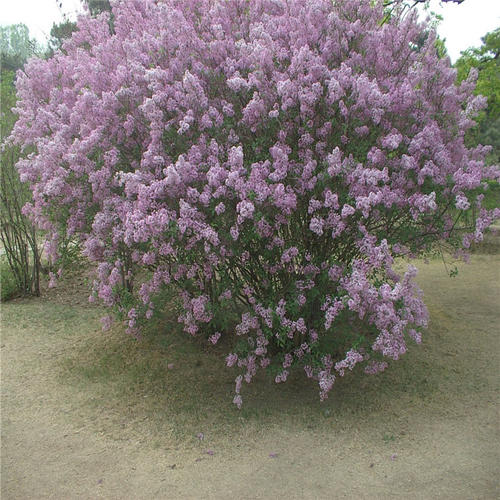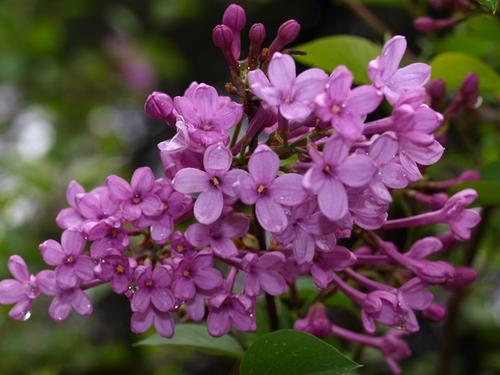Lilac profile
Written by Maggie
Jan 25 2021

Lilac belongs to Lilac family, Lilac genus, Latin name is Syringa oblata, is a deciduous shrub or small tree.Widely distributed in Zanzibar, Madagascar and other places, because of the slender flower tube such as nails and fragrant name. Harbin city flower, Lilac is a famous garden flower and trees.The inflorescences are large and luxuriant, with elegant and fragrant colors, strong habits and easy cultivation, so they are widely cultivated and applied in gardens.
Lilac picture

Lilac characteristics
Branch
Lilac (Syringa oblata) is a deciduous shrub or small tree. Branchlets are sub cylindrical or tetragonal, lenticellata. Winter buds are scaly, terminal buds often absent.
Leaf
Leaves of Lilac (Syringa oblata) are opposite, simple, sparsely compound, entire, sparsely divided;
Flower
Flowers of Lilac (Syringa oblata) are bisexual, cymes arranged in panicles, terminal or lateral, branched simultaneously with or after leaves;Pedicel or unpedicel; Calyx is small, campanulate, 4-dentate or irregularly cleft, or subtruncate, persistent; Lilac corolla is funnel-shaped, saltplate shaped or subextended, lobes 4, spreading or suberect, buds valvate;Stamens 2, attached to larynx of corolla tube to middle of corolla tube, embedded or protruding; Ovary is 2-locule, each locule with 2 pendulous ovules, style filiform, shorter than stamen, stigma 2-lobed.
Fruit
Fruit of Lilac (Syringa oblata) is a capsule, slightly oblate, 2-locular, interlocular dehiscent; Seeds are flattened winged; Cotyledons are ovate, flat; Radicle is upward.
Growth habits of Lilac
Lilac (Syringa oblata) mainly grows in hillside jungle, mountain gully stream side, valley road side and beach water side. It is widely distributed north of the Yangtze River in China.
Lilac (Syringa oblata) prefers warm, wet, sunny environments, and most varieties are hardy. After falling leaves, bare roots can be transplanted and planted in fertile, loose soil.
Lilac (Syringa oblata) requires adequate sunlight for growth, weakens in semi-shade and flowers less.

Lilac propagation methods
Lilac (Syringa oblata) is mainly propagated by sowing and cutting, and can also be propagated by grafting, layering and splitting. Seeds of Lilac should be stratified and sown in the spring of the following year. The survival rate is high when the shoots are cut and hard shoots are cut in summer. Grafting can use bud grafting or grafting method; During the layering process of Lilac, the rhizosphere buds are pressed into the soil, and the soil is kept moist after being pressed, so that the mother plant can be isolated for planting in the autumn of the same year. Dividing the Lilac is carried out before early spring bud or after autumn leaves, the whole pier Lilac is dug out to divide the clump planting. Fall when the plant should be first planted, the following spring line on the ground branches appropriate pruning after transplanting.
Lilac landscape utility
Lilac (Syringa oblata) is a plant commonly cultivated in cool areas. Lilac is suitable for planting in gardens, residential areas, hospitals, schools, kindergartens or other gardens, scenic spots. Lilac can be planted alone, planted in clusters or in the roadside, lawn, corner corner, forest margin, and can also be planted with other trees and shrubs, especially evergreen trees.Individual species can be used as flower hedges. Lilac can be potted or as bonsai, also can be cut flowers. Lilac (Syringa oblata) is one of the most common ornamental flowers and trees in China. It blooms in the middle of spring with a fragrant fragrance, colorful flowers and lovely variations.
The Lilac flower language
Lilac's flower language is brilliant. Lilac (Syringa oblata) is called the flower of heaven, perhaps because of its noble fragrance, which has been cherished since ancient times.
The person that gets Lilac blessing, having glorious life, because too clever, has the defect that likes to take shortcuts, on the road that pursues reason, always likes to run deviate, forget the final goal.

Latest Updated
- Benefits of Bugleweed - 7 Science-backed Health Benefits
- Bugleweed Dangers & Side Effects - Is It Poisonous?
- How to Plant Evergreen Trees - What You Should Know
- When to Plant Evergreens - Grow Guide for Evergreen Trees
- 12 Wonderful Evergreen Shrubs for Your Garden
- 12 Popular Evergreen Plants with Pictures for Beginners
- When And How To Prune A Lilac Bush Like a Pro
- How to Grow & Care for Lilac Vine (Hardenbergia Violacea)
- Japanese Lilac Tree (Syringa Reticulata) Care & Propagation Guide
- Shumard Oak Pros and Cons - What to Know
Popular Articles
- Winter maintenance of Antirrhinum Majus
- How to Grow Terminalia Mantaly Tree
- How to Grow and Care for Crossostephium Chinense
- How to grow Antirrhinum Majus in spring
- Peristeria Elata (Dove Orchid) Profile: Info & Care Guide
- Underwatered Snake Plant (Sansevieria Trifasciata) - Signs And How To Fix
- How to Care for Brazilian Jasmine Plant (Mandevilla Sanderi)
- How to Grow & Care for Graptopetalum Purple Delight in Summer
- Rosa Chinensis (China Rose): Plant Growing & Care Tips
- How to Care for Baby Sun Rose (Aptenia Cordifolia)